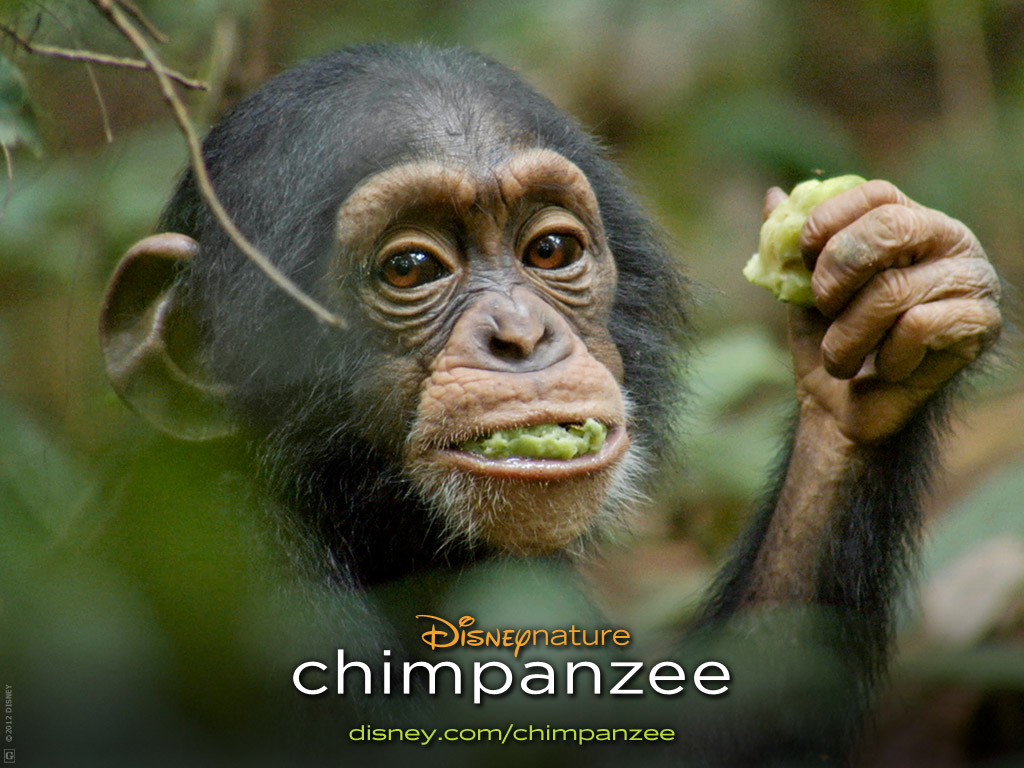This week’s endangered species is an old friend about whom I’ve written before – the chimpanzee (Pan troglodytes). The chimpanzee is listed as endangered on the IUCN List of Threatened Species and was in the news this past week because of a report from the
There are four subspecies of chimpanzee, each with unique appearance, distribution, and behavior: the western chimpanzee (P. t. verus), the central chimpanzee (P. t. troglodytes), eastern chimpanzee (P. t. schweinfurthii), and the Nigeria-Cameroon chimpanzee (P. t. ellioti). Chimpanzees are omnivores that live in a complex social structure with much parental care of young. Although chimpanzees usually reach sexual maturity at 7 years of age, they usually don’t reproduce until they’re 13-14 years old. Young stay with parents for over 5 years, and sometimes up to 10 years. According to the World Wildlife Fund, the major threats to chimpanzee populations are habitat loss and degradation, hunting, and disease.
Check out these books and movies, if you’d like to learn more about these fascinating animals and the people who work with them:
- Disney’s Chimpanzee – Wow! You knew that the greenmomster would be checking this film out on opening weekend, and it was terrific! As explained by the filmmakers, Alastair Fothergill and Mark Linfield, on NPR, this film is not a documentary. It’s a story
 with “heroes”, “bad guys”, and a conflict. The filmmakers very cleverly weave together nature footage to tell an entertaining story, and, as an extra plus, they teach us quite a bit about chimpanzees. The photography is incredible, but never gets in the way of the story and the chimpanzees. Additionally, filmmakers managed to document a behavior rarely seen by scientists – a dominant male chimpanzee “adopting” a baby chimpanzee after its mother is killed. I highly recommend this movie for your entire family!
with “heroes”, “bad guys”, and a conflict. The filmmakers very cleverly weave together nature footage to tell an entertaining story, and, as an extra plus, they teach us quite a bit about chimpanzees. The photography is incredible, but never gets in the way of the story and the chimpanzees. Additionally, filmmakers managed to document a behavior rarely seen by scientists – a dominant male chimpanzee “adopting” a baby chimpanzee after its mother is killed. I highly recommend this movie for your entire family! - The Chimps of Fauna Sanctuary – A sadder tale than the one told in the movie Chimpanzee, is the story of chimpanzees formerly used for medical research. In The Chimps of Fauna Sanctuary, Andrew Westoll describes his experiences as a volunteer at Fauna Sanctuary. The sanctuary was established in 1997 for animals from farming, entertainment, education, and research. The sanctuary’s primary focus is providing a home for chimpanzees rescued from research. Andrew Westoll’s fascinating book gives us a glimpse into the intelligence and complex social structure of chimpanzees, and the dedication of the people who are committed to helping them. (If you’re interested in learning about the first 100 chimpanzees used in scientific research in the U.S., see Wesleyan University’s recent research.)
- Jane Goodall Institute (JGI) – Jane Goodall’s name is synonymous with chimpanzees and wild chimpanzee preservation. She has devoted her life to studying and protecting chimpanzees and still travels over 300 days per year. One of the many activities of the JGI is the Roots and Shoots program, founded in 1991 by Goodall and a group of Tanzanian students to organize youth interested in service projects, campaigns, and events that help to conserve and protect the natural world. Goodall has written many books, but two of the more recent books that I’ve read and enjoyed are Harvest for Hope (A Guide to Mindful Eating) and Reason for Hope (A Spiritual Journey).
Sources:
Council of Councils Working Group. 2013. “Council of Councils Working Group Report on the Use of Chimpanzees in NIH-Supported Research.” Accessed online 1/25/2013. http://dpcpsi.nih.gov/council/pdf/FNL_Report_WG_Chimpanzees.pdf
National Public Radio. 2012. “Following the LIves of Chimpanzees on Screen.” April 19,2012. Accessed online 1/25/2013. http://www.npr.org/2012/04/19/150734375/following-the-lives-of-chimpanzees-on-screen
Westoll, A. 2011. The Chimps of Fauna Sanctuary. Houghton Mifflin Harcourt. ISBN-13: 9780547327808
World Wildlife Fund. 2013. “Chimpanzees” Accessed online 1/25/2013. http://wwf.panda.org/what_we_do/endangered_species/great_apes/chimpanzees/
No comments:
Post a Comment